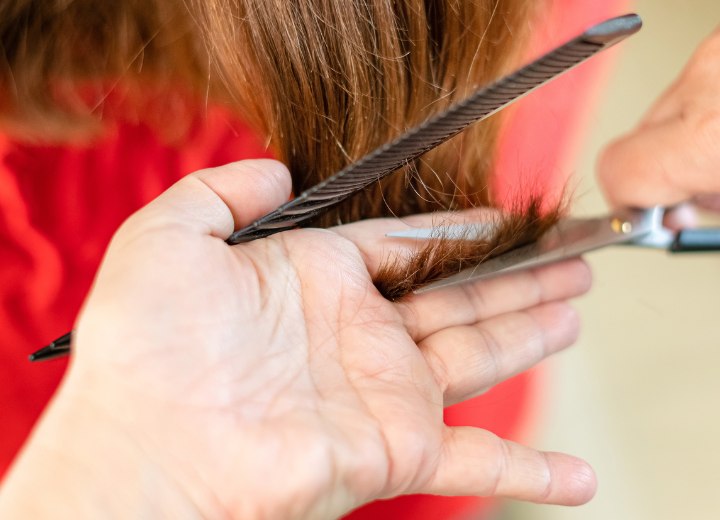Why and How to Trim Long Hair

Yet, we all know that the longer the hair is, the longer it has been exposed to the tortures we put our hair through every day. Sun, wind, blow-drying, ponytail holders, harsh shampoos, smog, pillows, and even poor diet can all take their toll on hair. In order to keep your hair looking healthy, even if it's long, you must keep it trimmed.
If you are trying to grow your hair longer, this means you can lose the least healthy half-inch of hair with each trim and still gain 3 inches each year. It may seem like slow progress, but you'll be happier with the results in the end.
Specific Reasons to Trim Long Hair
Sometimes, long hair gets damaged by environmental conditions or specific styling requirements. The results can be severe in the long run. The best way to tell if this is an issue for you is to look at your hair when it's down and examine the density of the hair both at the scalp area and the ends. Does your hair seem to "thin out" the longer it gets? Do you have a lot of split ends? Does it get frizzy and frayed-looking at the ends?
A friend of mine is a man who has been wearing his hair long for nearly ten years now. He's a computer professional and motorcyclist. For him, his long hair (worn in a ponytail for work and riding) is a matter of personal expression. He calls it his "tribute to counterculture. The trouble is, wearing it in an elastic band for 18-20 hours a day and in wind and traffic has caused his hair to break off at about half its desired length. His hair becomes very sparse at the ends and not at all what he wants it to be.
It took a lot of convincing, but finally, I made him agree to let me work with him on trimming off the damaged ends. The first cut was the hardest for him. We had to lose about 4 inches from the overall length. However, in the last year, with careful trimming (and teaching him how to care for his hair properly) he now has hair a little longer than when we started, and it is shiny, smooth, and healthy-looking.

With long, blunt-cut hair, trimming the ends of the hair is a simple matter of following the established line and removing the damaged ends. Yet with long-layered hairstyles, there is an alternative that works especially well.
Brush out the hair to remove any tangles and section the hair into workable sections. Use clips to hold the hair you aren't working with out of the way. Divide the section you're working with into approximately two-inch segments and twist the hair along the length. You'll notice that the layered ends (and the split ends) will stick out from the twist. Following the line of the twist, carefully snip off the split ends along the length of the segment. Do this with all the segments of the section you're working on, and move on to a new section.
The result will be a smoother, healthier-looking style, with no loss of length or potential change in the style.
©Hairfinder.com
See also:
Split-Ender
How to Cut Hair
More about hair care
